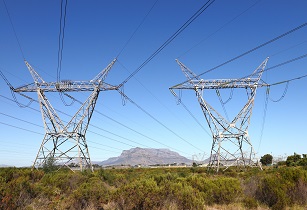At Enlit Africa, running from 16-18 May, acting group chief executive of South Africa’s Eskom, Calib Cassim, stated the power company’s executive management has agreed to assist generation to minimise the impact of loadshedding for the coming winter
“We hope to recover 6,000MW in our fleet in the next two years,” commented Cassim at the opening session of the conference in Cape Town. He admitted that the utility was “starting the winter on the backfoot, minus 3,000MW. A year ago, we had three units of Kusile working, which we don’t have, and two units of Koeberg are also not available this year.”
Cassim was asked how the campaign against corruption in a large organisation such as Eskom was progressing and replied that there are certain areas where more corruption takes place and that is where the focus is. “Also, the number of items that have been raised on our whistle-blowing platforms is increasing and we see that as a positive indicator.”
He said, however, that there was still a lack of convictions of those that are charged and that this was needed to set an example to instil confidence in Eskom.
Alderman James Vos, City of Cape Town Mayco member for economic development, revealed that a survey amongst business owners showed that 66% of them have had to cut jobs because of loadshedding. “With the national power supply that is still dominated by coal, it is clear that an urgent shift in policy is necessary. An important and hopeful part of this is that it is also doable, and I know this because here, in the city of Cape Town, we are doing it.
“At the moment, this city is able to protect its customers from up to two stages of loadshedding, thanks to our maintenance and our investment in the Steenbras Hydro Pumped Storage Scheme.”
“Phase 1 of our tender for 200MW of renewable energy from independent power producers is also at an advanced stage with contracts for this phase on track for final awarding in this year.
“We also launched our biggest power tender yet, a 500MW dispatchable energy tender. It is part of our plan to protect our residents from the first four stages of loadshedding within three years.”
James Mackay, CEO of the Energy Council of SA, addressed Africa’s just energy transition in the face of the net-zero targets. He pointed out that global clean technology investment overtook financing of fossil fuel projects for the first time in 2022.
“South Africa will decarbonise and we will transition,” Mackay stated. He warned, however, that being a late adopter of clean technology will further entrench the country’s problems. “If we can’t be agile enough to recognise the economic opportunities in clean technology, we will be excluded from global markets.”
Vuyelwa Mahanyele, GE Vernova’s regional sales director for gas, highlighted how they see a fourth dimension to the energy trilemma (finding a balance between security, affordability and sustainability), namely the need to develop large infrastructure projects and the need for the jobs and skills to create the energy required to lead the continent’s economic development. “Decarbonisation is not as straightforward as we want it to be. It’s not just renewable energy and batteries, which are critical.” She stated that both renewable energy sources and carbon emitting sources have a role play. “Without planning to incorporate both of these into our system, we won’t achieve energy security.”





















